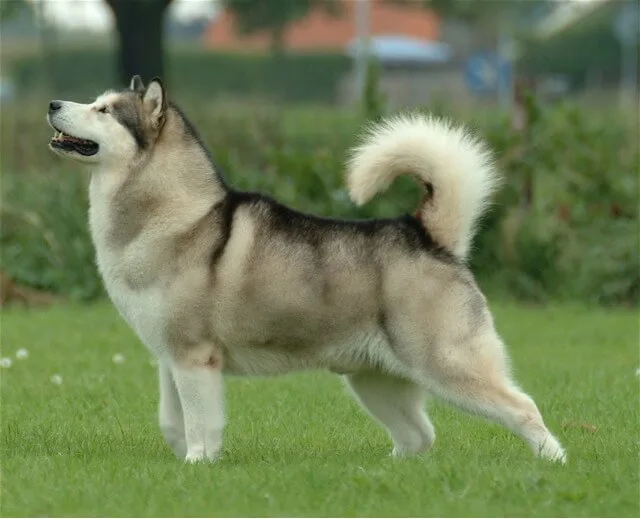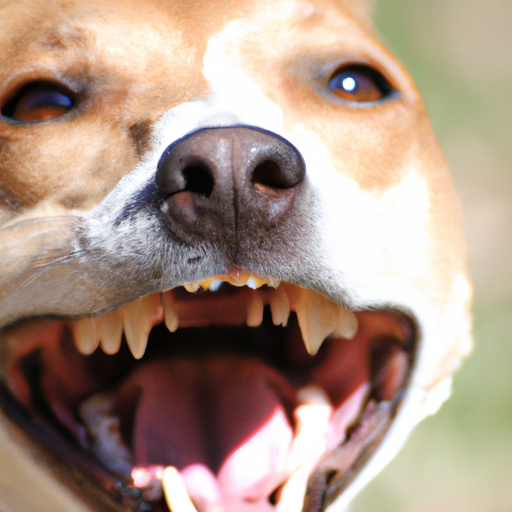Alaskan Malamute
You’re about to embark on a spectacular journey through the icy landscapes of Alaska, one where a furry breed known as the Alaskan Malamute reigns supreme. Boasting of strength, resilience, and an unforgettable charm, this particular breed holds significant prominence within the canine world. Packed with personality and oozing with an adventurous spirit, Alaskan Malamutes are dog-lovers’ delight. Throughout this feature article, you’ll be privy to fascinating facts, valuable insights, and a host of important characteristics unique to Alaskan Malamutes—the powerhouses of the Arctic.

Origins of the Alaskan Malamute
The Alaskan Malamute, a breed revered for its ululating howl and robust physique, is deeply entrenched in the annals of history. It beckons us to the ice-covered terrain of Alaska.
The history and ancestry of the breed
The breed’s beginnings are shrouded in the snowy past of the Arctic, tracing back thousands of years. Your Alaskan Malamute is not just a pet, but a vital piece of human history, capturing the essence of the human-dog relationship that probably spans over 4,000 years. Your furry friend is a descendant of dogs who journeyed with the Paleo-Eskimo peoples as they crossed the Bering Strait to North America.
The breed’s connection to the Malamute Inuit tribe
The Malamute Inuit tribe, fabled for their nomadic existence, are the namesake of this breed. The tribe, famed for their hunting prowess, developed these dogs to pull heavy sleds and assist in hunts, cultivating a breed known for its strength and endurance.
The original purpose and function of the breed
The Alaskan Malamute was not just a loyal pet but a survival tool. They transported necessary goods, assisted in hunts, provided warmth, and offered companionship in the scatteringly populated and fiercely frigid Arctic regions.
Physical Characteristics of the Alaskan Malamute
Your fur-baby not only woos hearts with their warm eyes and thick soft fur but is also a powerhouse of strength and endurance.
Size, weight, and life expectancy
On average, a male Alaskan Malamute could tip the scales at 85 pounds and stand tall at 25 inches at the shoulder, while females typically weigh around 75 pounds and stand at 23 inches. With proper care, these furry friends can be a part of your family for approximately 10-15 years.
Description of coat, color, and markings
Arguably, one of the most attractive features of the Alaskan Malamute is its thick and double-layered coat meant to withstand brutal Arctic conditions. Alaskan Malamutes sport a range of colors – from solid white to shades of gray and black, red, or sable, often with captivating facial markings.
Specific physical traits of the breed
The Alaskan Malamute’s broad head, erect ears, and deep-set almond-shaped eyes project an impression of wolf-like strength and intelligence without threatening intensity. These characteristics, combined with their sturdy, muscular body and bushy tail curled over their back, contribute to their majestic aura.
Alaskan Malamute Temperament
Despite their imposing physique, Alaskan Malamute dogs are full of warmth, affection, and a playful demeanor.
Typical behaviors of the breed
Malamutes are renowned for their friendly disposition. Intensely social creatures, they thrive on love and attention and often display childlike enthusiasm even in adulthood. However, their historic pack nature also means they can have an assertive streak.
Interactions with owners and family
In a family setting, Malamutes can be extremely loyal and protective. They crave active engagement, and if you’re lax, they could resort to digging holes or chewing on something just to kill boredom!
Temperament with children and other animals
Generally, Alaskan Malamutes get along well with children, exhibiting patience and gentleness. But remember, every dog has a unique personality. Interaction with other animals, particularly of the same sex or smaller ones, can be dicey due to their strong prey drive and dominant attitude.
Training and Socialization
Training and socialization play an instrumental role in molding the attitude and behavior of any dog, including the Alaskan Malamute.
The importance of early socialization
Early socialization, starting as early as the breeder’s home, helps ingrain the acceptance of various people, environments, sounds, and animals.
Tips for training Alaskan Malamutes
Malamutes tend to be self-willed and could be a challenge to train for first-time dog owners. Positive reinforcement methods, consistent rules, and regular mental and physical stimulation work best for this breed.
The breed’s intelligence and trainability
Although intelligent, Malamutes are not as eager to please as some breeds. Patience, time, and understanding can help tap into their intellect and sly sense of humor.

Health Issues Common in Alaskan Malamutes
Like any breed, Alaskan Malamute dogs are predisposed to some health conditions.
Genetic conditions related to the breed
Some of the breed-specific genetic conditions include hip dysplasia, chondrodysplasia, inherited polyneuropathy, and an inherited eye disease called day blindness.
Common health issues and lifespan
Other common ailments may include thyroid issues, heart problems, and skin disorders. But with meaningful preventive care and veterinary supervision, your Malamute could enjoy a healthy life of up to 15 years.
How to promote good health in the breed
Frequent health checks, a balanced diet, ample exercise, and mental stimulation contribute to the overall well-being of your Alaskan Malamute.
Diet and Nutrition
Nutrition is an indispensable part of your Malamute’s health journey.
Ideal diet for Alaskan Malamutes
Malamutes need a balanced diet of proteins, carbohydrates, fats, vitamins, and minerals. Quality dog food, either commercially manufactured or home-prepared, can fulfill these needs, but portion control is crucial.
Nutritional requirements across different stages of life
The nutritional needs of your Malamute will vary as they grow from a puppy to an adult and finally, to a senior dog. Consultation with a vet can help you balance their meals across these stages.
The risk of obesity in the breed
Malamutes love their food and can easily become overweight or obese. Regular exercise and portion management can help mitigate this risk.
Exercise Requirements
An active lifestyle is fundamental to the life of an Alaskan Malamute.
Recommended amount of daily exercise
The breed requires robust daily exercise for at least an hour. Extra playtime or long walks can help satisfy their restless energy.
The breed’s energy level and exercise needs
Malamutes have high energy levels. They need regular physical exercise and mental stimulation for their well-being.
Activities suitable for Alaskan Malamutes
Besides walks, various activities can keep your Malamute engaged. Try jogs, hikes, retrieving balls or frisbees, pulling weights, or any canine sports that you both can enjoy.
Grooming the Alaskan Malamute
Maintaining your Alaskan Malamute’s exquisite double coat requires consistent effort.
The breed’s grooming needs
Malamutes are heavy shedders. Their double coat needs regular brushing to reduce shedding and matting. Also, periodic baths, nail trimming, and dental and ear care are significant aspects of their grooming.
Recommendations for maintaining the coat and skin
A good-quality brush can be your most reliable tool along with moisturizing conditioners and regular inspection for any skin irritation.
Brushing and shedding schedules
Your Malamute should ideally be groomed at least once a week, and more frequently during the shedding seasons of spring and fall.
Living Conditions
The Alaskan Malamute’s suitability to your home is largely dependent on their exercise, space, and social needs.
Ideal home and living environments for this breed
A house with a securely fenced yard is ideal for this breed. But remember, they love company, so don’t expect them to be an outdoor dog all the time.
Factors to consider in regards to weather and climate
Given their double-coat, Malamutes are heat sensitive. Prolonged exposure to high temperatures should be avoided. They are at their best in cold climates.
Implications of the breed’s pack mentality on living conditions
Remember, Malamutes are pack animals. They cherish family companionship and could resort to destructive behavior if left alone for long durations.
Adoption and Buying Considerations
Choosing to bring an Alaskan Malamute into your home requires careful considerations.
Factors to consider when buying or adopting an Alaskan Malamute
Do consider your living conditions and the dog’s temperament, exercise, and grooming needs before acquiring a Malamute.
Tips on finding a responsible breeder
A responsible breeder provides transparent information about the puppy’s parentage, health conditions, and temperament to help you make a more informed decision.
Alternatives to buying like rescue organizations
Adopting a rescue dog can be a rewarding experience. Alaskan Malamute-specific rescue groups across the globe work tirelessly to ensure that these majestic dogs find their forever homes.







